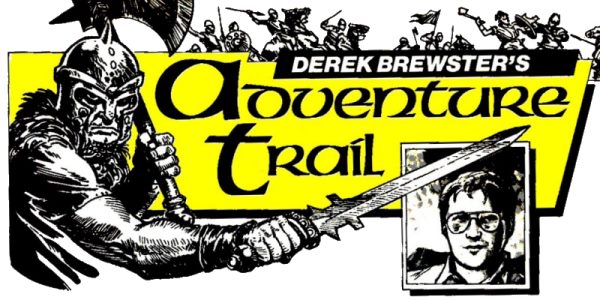

 LIVE SINCLAIR BOWS OUT of computing for the moment and CRASH
magazine announces startlingly high circulation figures, higher than any other
computing title. Could there possibly be any connection between these two
facts? I will endeavour to find out in my own inimitable way, concentrating on
the notion of CRASH being an independent, in a home games world dominated by
Spectrum computers whose very existence can only be attributed to the dedicated
band of independents who whole-heartedly backed the machine.
LIVE SINCLAIR BOWS OUT of computing for the moment and CRASH
magazine announces startlingly high circulation figures, higher than any other
computing title. Could there possibly be any connection between these two
facts? I will endeavour to find out in my own inimitable way, concentrating on
the notion of CRASH being an independent, in a home games world dominated by
Spectrum computers whose very existence can only be attributed to the dedicated
band of independents who whole-heartedly backed the machine.
As I’ve said before, I have owned at one time or another most of the home computers released in the UK, the ZX80 being the only one to escape my curiosity and to achieve mass circulation. Of all these computers, the Spectrum holds a special place in my affections. It was this computer, in the early days as much as now, which encouraged and fostered a wide band of dedicated programmers who were out to squeeze every byte of code until it paid dividends.
All the credit cannot be given to Sinclair himself for the Spectrum phenomenon. It often seemed to programmers slaving over a hot heat sink that the boffin was determined to wreck the software market by a whole catalogue of hotchpotches and own-goals. These were: Interface 2, the Microdrives, and early (thankfully fruitless) attempts to corner the software market for himself, when profits from hardware were being cut to the bone under increasing competition from the UK and America.
Interface 2 was a debacle of the highest ineptitude. For a price, it enabled the games player to connect a joystick (something which could be done without add-ons to competitor machines) and gave access to a glossy catalogue of ROM cartridge releases which only remained impressive so long as the reader was unaware of a major restriction: they were 16K programs only. This at a time when the 16K machines were sampling their last bytes as they were overtaken by the much more popular 48K computers. The irony is that 16K programs take little time to load in any case — it is the 48K programs which require the bonus of instant loading.
As it was, the cartridges were a flop. Had they been aimed at 48K machines, the Interface 2 would have been an undoubted success; people were certainly prepared to pay an extra £2 for each faster, more reliably-loading program. But this was not the only faux pas to this interface, as its purchasers soon discovered to their undying chagrin. In the world of games joysticks Sinclair took on the Kempston system with his Interface 2 when the Kempston protocol had already become the standard. By breaking with this standard Sinclair created havoc with programmers and public alike. Many of the top games deemed the Kempston system as the only real must as an option for joystick control.
Microdrives are now infamously known as unreliable and infuriatingly fickle. The Microdrive tapes wear quickly and are regularly munched up by the drive mechanism. More fundamentally, the drives do not offer what is implied is their reason for being: they are slow and require several revolutions of the tape loop before the drive warms up sufficiently to load the program. For those who haven’t heard enough, the consequences of running out of memory are not good. When a program is too long the computer crashes and the Microdrive spins on — wiping everything from its tape. It’s not hard to see that the Microdrive cannot be put to serious use and is a commercial non-starter, explaining the conspicuous lack of Microdrive software.
If all the technical shortcomings of the micro passed largely unnoticed by the Spectrum latecomers, the lack of a proper keyboard was plain to all and sundry. In my opinion, the first rubber keyboard was better than the later intended improvement.
Clive Sinclair single-handedly created the mass home computer market, and all the above criticism isn’t much more than nit-picking in the light of his major achievement. The ZX81 first popularised the notion of affordable home computing in the UK. Owing to Clive Sinclair’s brainchild, the UK has more computers per capita than any other country in the entire world. But of all the good and bad of Sinclair’s reign, the one thing he did not attempt was publishing his own ‘official’ magazine, and for this he can only be congratulated. Unlike Acorn, Amstrad and Commodore who did try, he was alone in letting the independents do what they do best — reporting the facts enthusiastically, without fear or trepidation, and with a desire to do what’s best for the entire Sinclair phenomenon, and not just the central nominal company.
What I hope Alan Sugar realises about the company he has taken over is the role that independents played in making the Spectrum. The quality of their add-ons for the computer was very high and exceptionally good value for money. For example, Sinclair could only offer a 30 day waiting list and an inflated price for the 16 to 48K upgrade, while small workshops performed the service more rapidly and at less cost.
I think that the Spectrum phenomenon, and the important role of independents in the computer’s success is not only a lesson for microcomputing, but for the whole British economy.